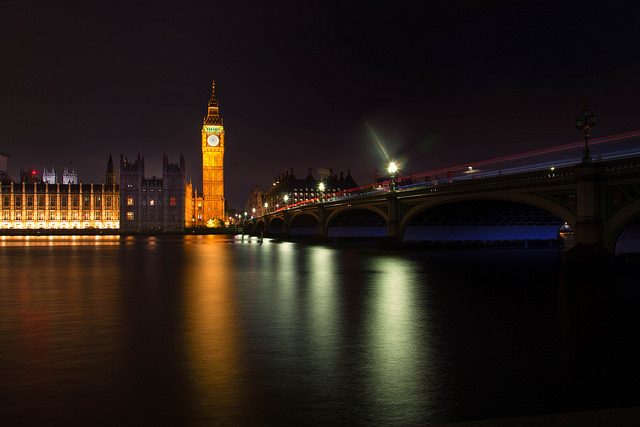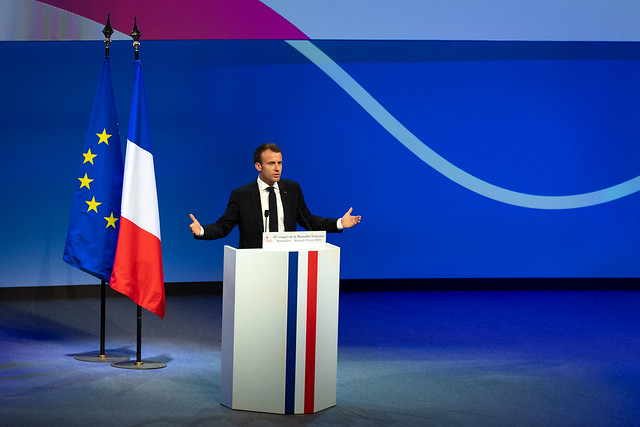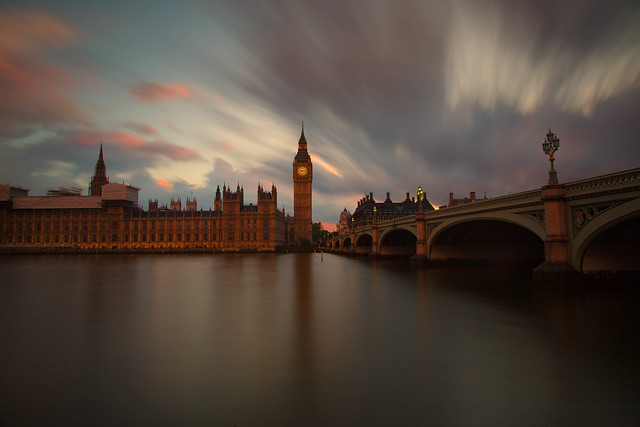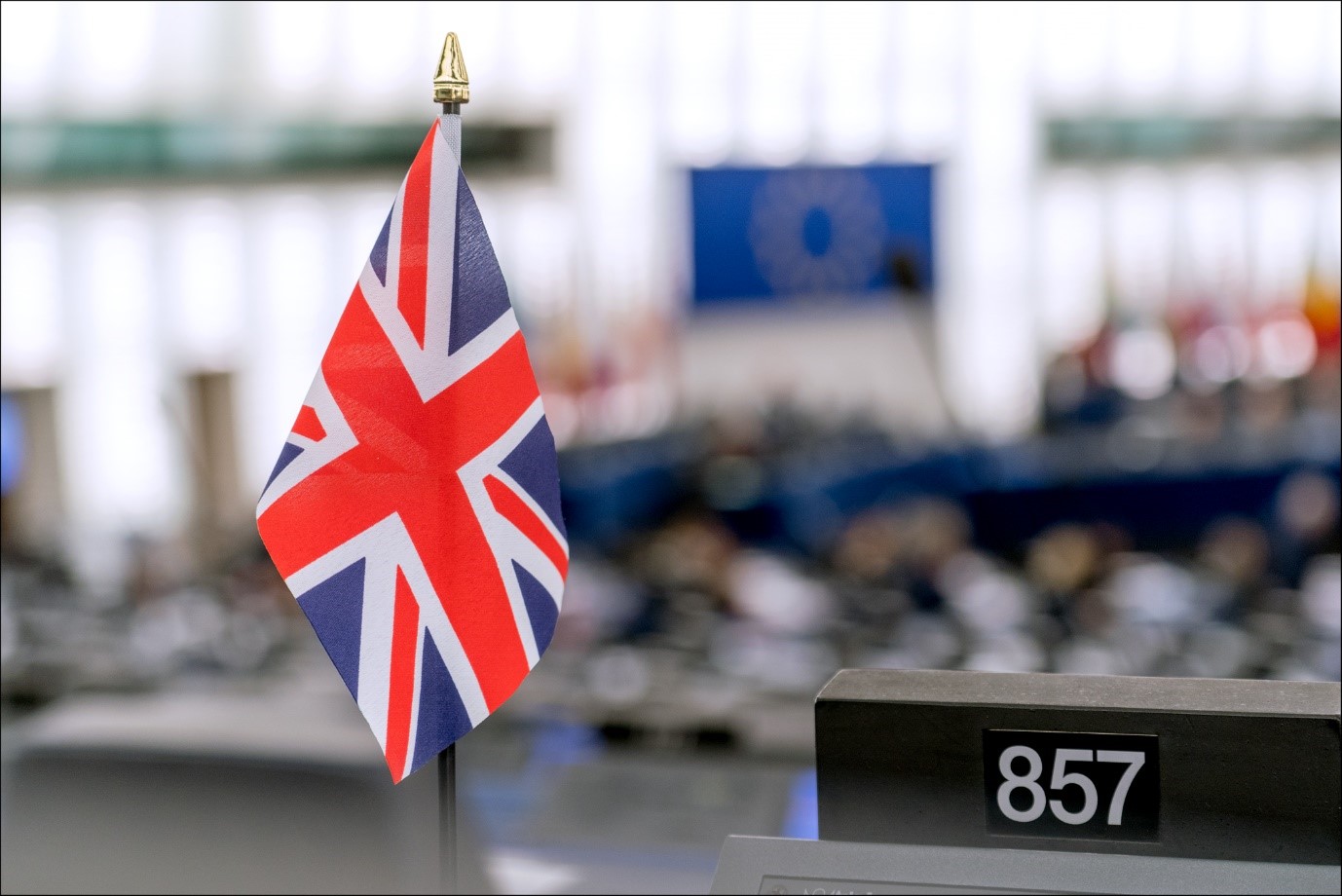Facing reality

With merely two weeks before the United Kingdom’s scheduled withdrawal from the European Union, Westminster still does not know what it wants and where it wishes to go.
In the end, her voice had gone. Clearly, the strain of the past few days had caught up with her. Yet, as Prime Minister Theresa May rose to defend the Draft Withdrawal Agreement (DWA) concluded with the European Union (EU), she tried to put on a valiant face to the increasingly sombre proceedings in the House of Commons. After all, this was the same agreement that had been rejected by Parliament by a record margin – nonetheless, the Prime Minister persisted.
In the course of last-minute talks, she tried to obtain legally binding commitments from the EU regarding the nature of the Irish backstop, the legal arrangement aimed at avoiding the need for a hard customs border between Northern Ireland (part of the United Kingdom) and the Republic of Ireland. Since the central concern about the backstop was the theoretical possibility of the UK being compelled to remain in a customs union, Prime Minister May attempted to obtain legal reassurances from the EU regarding the time-limited nature of the backstop. However, none of the solutions the Prime Minister envisaged (a definite end date to the backstop or the possibility of a unilateral exit) really found favour with the EU negotiators around former EU Commissioner Michel Barnier.
Same Wine, Different Labels
With only minimal concessions being made, the Prime Minister returned to London with an arrangement containing three parts: the same DWA, alongside a joint interpretative instrument and a unilateral declaration clarifying the UK Government’s understanding of the Northern Ireland Protocol to the DWA. Initial hopes of her being able to somehow persuade Parliament that these changes amounted to substantial concessions on part of the European Union were dashed by Attorney General Geoffrey Cox - who confirmed that the DWA had not been changed at all and that his original legal advice about the legal risks inherent in the backstop would need to be maintained. This led to swift declarations by the Democratic Unionist Party (the Northern Irish supply-and-confidence partner of the Conservative Party) and the nationalist ERG faction within the Conservative Party (led by Jacob Rees-Mogg) that they would reject the DWA again. Combined with the totals of the Labour, SNP, Liberal Democrat and other MPs, this led to the second massive defeat for the agreement, by a margin of 391-242.
Therefore, precisely sixteen days before the United Kingdom’s scheduled withdrawal from the European Union, Her Majesty’s Government does not have a clear plan, has lost its authority and is unable to push legislation through on its signature issue. As already elaborated upon at length, without a formal UK/EU withdrawal agreement, the United Kingdom will leave the EU on 30 March 2019, at midnight (Brussels time) – with all its political, economic, commercial, constitutional and legal links with the EU lapsing at that very moment, with (on this all reputable economists appear to agree) catastrophic consequences for the UK economy. So, what’s next? There are a range of options, which shall be outlined here.
No Deal and Article 50 Extension Votes
Upon the DWA’s defeat yesterday, Prime Minister May immediately rose to her feet and announced that she intended to keep her promise to permit votes on No Deal and an extension of the Article 50 TEU negotiation period. The No Deal motion will be debated today and is widely expected to be defeated, as there is a wide consensus against a No Deal Brexit. On Thursday, the House of Commons will vote on requesting an Article 50 extension – a vote which will likely be carried.
Once Parliament mandates an extension request, the Prime Minister will need to submit a formal request to the European Council – effectively, the heads of government of the remaining EU27 states. Whilst initial indications appeared to show an inclination to grant an extension in principle, a range of European elected officials have now made it clear that they wish to see a reasoned extension request by the United Kingdom. Then, there is the question governing the length of the extension: originally, the idea of a short, technical extension was being discussed as a means for Prime Minister May to obtain additional time until May or June to shepherd through the necessary legislation to implement the DWA. However, the DWA has now been rejected – and given the margins of defeat in January and yesterday, it is unlikely that this deal can credibly be put up for a vote in the House of Commons again. The question about the length of the extension is entirely up in the air. There is no guidance in the Treaties about the length, only that the government of the withdrawing Member State must make that request and that the European Council has to make a unanimous decision in this regard.
However, there is also the problem of the European Parliament elections in May 2019: whilst a number of elected officials have claimed that the UK would have to stage these as well, the legal service of the European Parliament itself has asserted that the UK failing to participate in the elections would not constitute an impediment to the proper constitution of the European Parliament. Additionally, in light of yesterday’s events, until the final status of the United Kingdom vis-à-vis the European Union has been settled, it might be a much wiser idea to permit the suspension of the European Parliament elections in the United Kingdom until a later date. Of course, resulting from the Treaties being silent about this specific set of circumstances, the issue of UK MEPs needing to be seated may very well end up before the Court of Justice. But we digress.
Let us assume these issues are settled in such a way that an extension becomes plausible. The central issue remains. What purpose should an extension serve? Let us run through every single option:
New Deal
One option would be for Prime Minister May to abandon some or all of her red lines, the non-negotiable conditions that she outlined in her 2017 Lancaster House speech, the most notable of which are: no jurisdiction of the Court of Justice; no major transfers of money to the European Union budget; no restrictions on the United Kingdom’s ability to trade; no freedom of movement for EU nationals. Arguably, those were the conditions that actually led to the Northern Ireland Protocol in the DWA and the backstop so reviled by the hard right within the Conservative Party. For May to abandon those red lines would require quite the volte-face. She would have to stand up to the implacable hardline Eurosceptics within her party, many of whom appear rather content with the United Kingdom leaving without a formal agreement with the EU. The problem here is that the Prime Minister has been severely weakened by several factors: she leads a minority government depending on the support of the Democratic Unionist Party; her signature project (the Withdrawal Agreement) has suffered two major defeats and her authority was weakened by a leadership challenge by the hard right within the Conservative Party last December. As argued on previous occasions, the Prime Minister is technically in office, but no longer in power.
Another permutation of this option would be for Prime Minister May to seek a formal extension and announcing that she will step down within a few months, pending the outcome of a Conservative Party leadership contest. A new prime minister, with fresh authority from either the parliamentary party and (possibly) the grassroots of the Conservative Party, could then attempt another negotiation – possibly abbreviated, given that the referendum result was announced in June 2016. However, much would depend on the political persuasion of the new Prime Minister: a Eurosceptic could attempt to steer the United Kingdom towards a somewhat professional withdrawal – whilst a more moderate Europhile (such as Works and Pensions Secretary Amber Rudd) might seek to change one, a few or all of the red lines outlined by Prime Minister May. After all, EU chief negotiator Michel Barnier has consistently maintained that a new proposal abandoning those red lines would quite possibly yield a different approach by the EU27 as well. However, given the sharp divides within the Conservative Party and the lack of a mutually agreeable approach to Brexit, one has to wonder whether a new Prime Minister could credibly offer a new deal without the support of the Labour Party opposition.
Given the gravity of Brexit on all aspects of Britain’s national life, one would think that a Prime Minister steering such a project would pursue a cross-party approach to ensure the broadest possible range of support. Thus far, Prime Minister May has avoided to do so – for fear of alienating the hard right within her own party. That said, such an approach could negate the need for reliance on extreme outliers like the Conservative ERG faction or the Democratic Unionists. Whether under Prime Minister May or a successor, such an approach would provide the only viable guarantee for both the political cover to negotiate a new deal and to enact the necessary legislation in Parliament.
The shape of a new deal could range from some version of the Labour Party’s (somewhat vague) Brexit plan, involving a permanent UK/EU Customs Union towards a Norway-style EEA membership towards a range of bilateral Swiss-style sectoral agreements. Whether freedom of movement or the ability to sign separate trade deals and/or, quite possibly, accepting the jurisdiction of the Court of Justice, greater flexibility on these issues will increase the range of options for the UK. Whilst constitutionally not necessary, upon conclusion of fresh negotiations, such a deal could then be put to the British people for ratification (see also below).
General Election
This is an option floated by Labour Party leader Jeremy Corbyn and his supporters. There are several problems with this approach: first, under the Fixed-Term Parliaments Act 2011, a two-thirds majority of the House of Commons would have to vote for early general elections. However, this begs the question of why the Conservative Party would take the risk of doing so in the midst of the withdrawal process and its reputation among wide swaths of the country having been damaged. Additionally, given her weakened authority, May also announced prior to the no-confidence motion against her leadership that she would not contest the 2021 general election. Reversing that pledge, especially in light of her diminished stature, would appear to be a rather fanciful notion. Consequently, the Conservative Party would need to select a new leader in an accelerated leadership process to fight the upcoming election.
Besides, as shown by the 2010 and 2017 general elections, there is no guarantee that any of the major parties would be able to command a majority in the House of Commons – which would lead to a minority government or a coalition, and essentially the same situation faced by Theresa May today. Finally, this would be the third general election since 2015, causing plenty of revulsion among many fatigued swing voters – further undermining the UK’s reputation for stability, especially if this leads to yet another minority government.
Second Referendum
As previously outlined, it is increasingly appearing that this may be the only manner in which to resolve the current impasse in a permanent fashion. There appears to be no parliamentary majority for No Deal or Prime Minister May’s deal. That said, the elephant in the room is the 2016 national referendum: proponents of withdrawal have consistently maintained the line that the referendum result must be respected. However, it is arguable that in the three years that have almost passed since June 2016, Her Majesty’s Government has made every effort to implement the Leave option. It is equally true, though, that the Leave option on the ballot was not concrete – and that many Leave campaigners indicated that the United Kingdom would remain a member of the Single Market. Whilst the principle of Leave was consented to, its shape was not.
Besides, it is dubious whether a narrow majority of 52%, on a turnout of 72% (thus only representing roughly 35% of registered voters, excluding British nationals abroad who were left off the electoral rolls) represents a sufficiently clear and unambiguous representation of the will of the British people. A second referendum can resolve these difficulties – and whilst the proposal may not have a majority in the House of Commons right now, given the dynamics of the process unfolding right now, this increasingly appears as the only plausible solution to settle this issue. As previously described, such a referendum could conceivably feature a question about ratifying the final deal (some version of Prime Minister May’s deal or a new deal; and another one about remaining in the European Union or leaving entirely without a deal in case the first question is answered with No.
With a little over two weeks prior to the country’s scheduled withdrawal from the European Union, Parliament needs to make up its mind – and fast. The time for idle dreaming about withdrawal from the European Union has long passed, and it is becoming increasingly clear that the warnings of the Remain campaign (badly run as it was) are ringing much more true than the rosy promises of its Leave counterpart. With both the DWA and a No Deal not palatable to Parliament, the likely extension request will place the levers firmly in the European Union’s hands: the terms of the extension can essentially be set out by the European Council. Given the request for a reasoned extension, it is likely that some tough decisions will need to be made in the days ahead. Facing up to reality will not be easy for Britain’s politicians – but it is the only viable way out of this mess.
Image by Flickr - Michael Levine-Clark
| More blogs on Law Blogs Maastricht |
Other blogs:
Also read
-
Britain gets a hard-fought extension, with incalculable consequences.
-
With options running out before the United Kingdom faces yet another critical deadline, Prime Minister Theresa May tries one last (desperate) gamble to “save Brexit” – reaching out to the Labour Party. Will it be successful? Which are the options remaining on the table? What could happen next? Here...
-
Staying just a little bit longer? Or for good?
Summary: With the European Council throwing a lifeline to the United Kingdom, all options are back on the table. Rather than taking back control, the United Kingdom now finds itself dependent on the remainder of the European Union – with the absence of...


